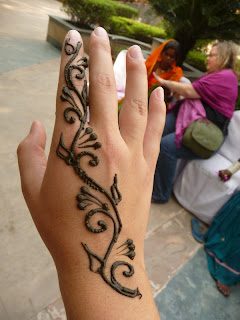One of Pokey’s first memories was of being in a very dark place. It smelled like cardboard. He remembered seeing little points of light shining through the darkness, and the crisp scent of prime pine peeing territory mingling with the smells of paper and boxes. Then, the ground, walls, and roof began to shake and the darkness was torn away with loud shredding noises by a very excited little girl. The puppy looked up at the girl, who squealed as if her tail had just been stepped on.
Pokey looked up from the little girl to the towering fir tree piled around with lots of boxes and paper bits. If the little girl would just let him go, he’d be glad to mark the turf for her.
Many years after the puppy grew into a larger, older, somewhat crankier dog – still with shoe button eyes and far too much personality for his diminutive size – he remembered that day. And, he came to learn its significance. Every year, the little girl (who had grown a few inches up and a few inches out and kept leaving the pack for weeks at a time) and “Mom” recreated the scene. They put up the tree. They put out the boxes. And every year since the year of his birth, they celebrated him.
He appreciated the effort.
Pokey knew that when the tree went up and the boxes went out, it meant that his people would worship him appropriately again.
He was given gifts, which he tore open with his quick little paws and flung into the air. The people tried to grab his toys, but he was always a little too fast for them. His success rate of keeping his toys away from his people made him very proud.
He was given treats – biscuits, but also bits of cookies, graham crackers, steak and chicken. He wished he could impress upon his people that he would prefer Pizza on his special day, but his people could be very dense sometimes. Usually though, they understood.
When he was taken for walks in the weeks leading up to his special day, his people dressed him in a red and white ceremonial coat, which he did not like. It itched.
This year, Pokey was ready. The tree was up, the boxes were out. And he was sniffing around the tree for his annual offerings. He knew them by the sound of their special crinkly paper and by the scent of fuzz. Sometimes he was thrown off by faux fur trim on people clothes, but his worshipping people didn’t allow him to drag their clothes around. He didn't know why they were so picky. He searched and searched, but couldn’t find the gifts that were due him.
He looked up at the little girl, ears pricked forward, and stared at her, willing her to understand that he wanted his presents NOW. She looked back and said “Nooooo, way wa bill blahbarro.” He understood “no,” but didn’t like it. He turned to “Mom” and sneezed at her, which usually got a reaction. She looked at him and made the same incomprehensible noises. He didn't understand. This was his day. They had celebrated him since he first came into their world in one of those tree boxes. And he wanted his presents.
Pokey was frustrated.
But not to worry. Because if Pokey had a calendar hung at terrier eye-level, he would have realized that the day on which his people celebrated him was tomorrow. It was only Christmas Eve.
Merry Christmas to All, and Remember: Dog is Watching.


















































